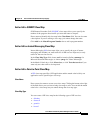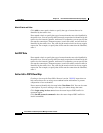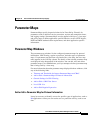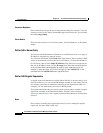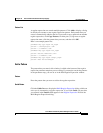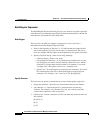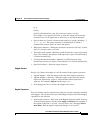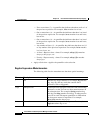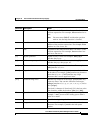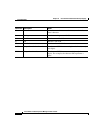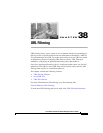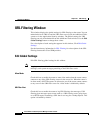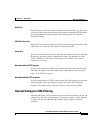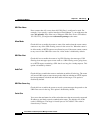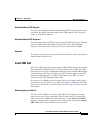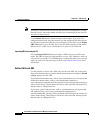
37-31
Cisco Router and Security Device Manager 2.5 User’s Guide
OL-4015-12
Chapter 37 Cisco Common Classification Policy Language
Parameter Maps
? Question mark A quantifier that indicates that there are 0 or 1 of the
previous expression. For example, lo?se matches lse or
lose.
Note You must enter Ctrl+V and then the question
mark or else the help function is invoked.
* Asterisk A quantifier that indicates that there are 0, 1 or any
number of the previous expression. For example, lo*se
matches lse, lose, loose, etc.
+ Plus A quantifier that indicates that there is at least 1 of the
previous expression. For example, lo+se matches lose
and loose, but not lse.
{x} Repeat quantifier Repeat exactly x times. For example, ab(xy){3}z
matches abxyxyxyz.
{x,} Minimum repeat quantifier Repeat at least x times. For example, ab(xy){2,}z
matches abxyxyz, abxyxyxyz, etc.
[abc] Character class Matches any character in the brackets. For example,
[abc] matches a, b, or c.
[^abc] Negated character class Matches a single character that is not contained within
the brackets. For example, [^abc] matches any character
other than a, b, or c. [^A-Z] matches any single
character that is not an uppercase letter.
[a-c] Character range class Matches any character in the range. [a-z] matches any
lowercase letter. You can mix characters and ranges:
[abcq-z] matches a, b, c, q, r, s, t, u, v, w, x, y, z, and so
does [a-cq-z].
The dash (-) character is literal only if it is the last or the
first character within the brackets: [abc-] or [-abc].
"" Quotation marks Preserves trailing or leading spaces in the string. For
example, " test" preserves the leading space when it
looks for a match.
^ Caret Specifies the beginning of a line.
\ Escape character When used with a metacharacter, matches a literal
character. For example, \[ matches the left square
bracket.
Character Description Notes



